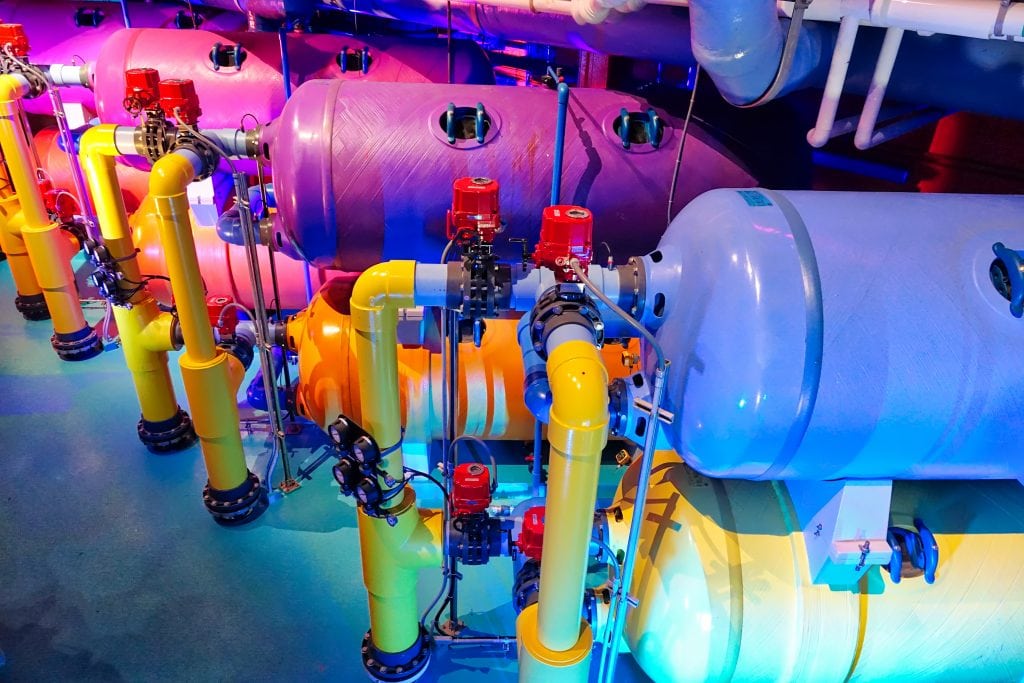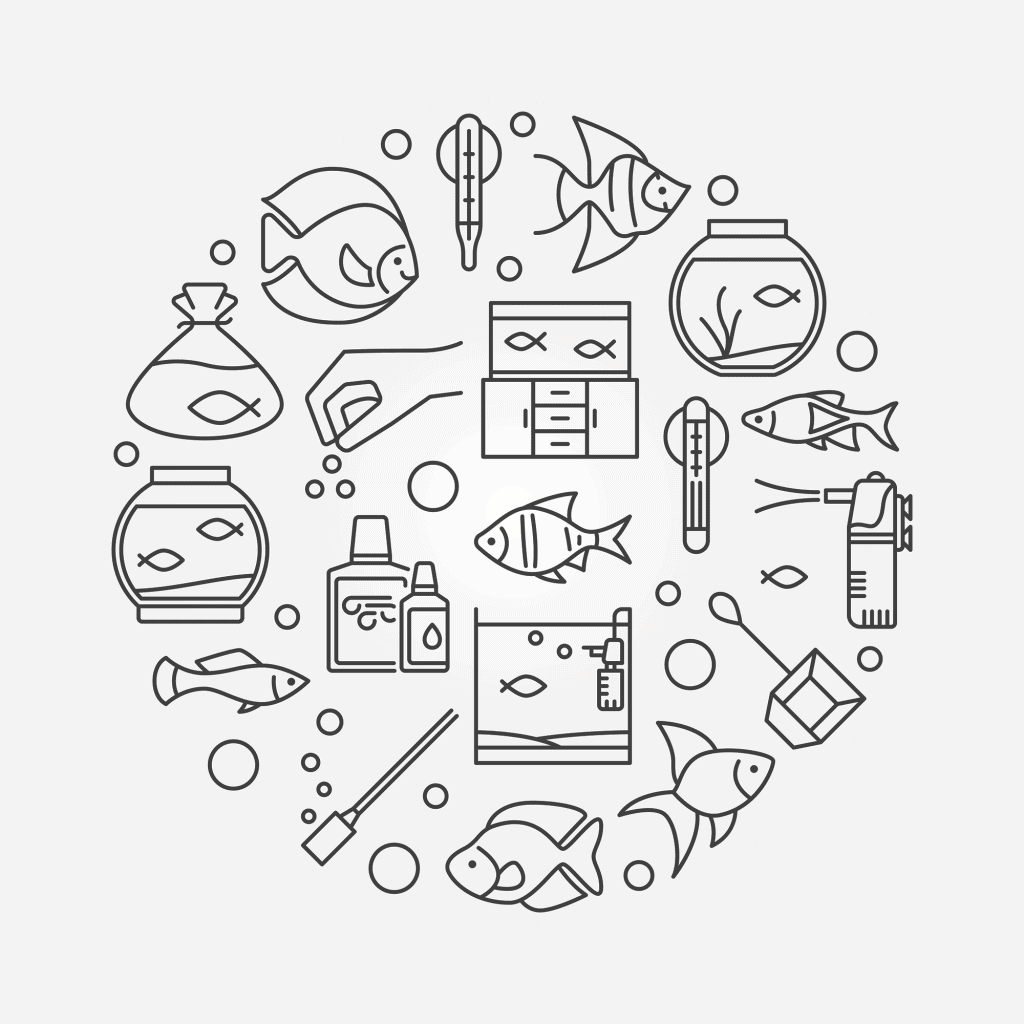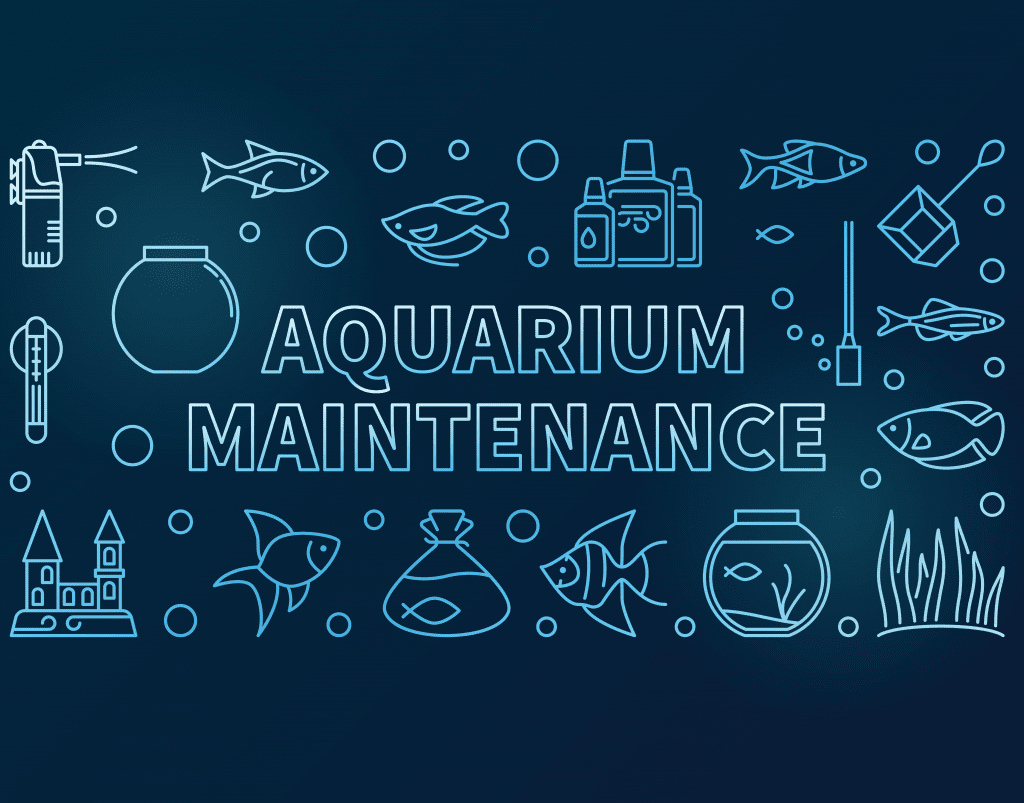Keeping a saltwater aquarium clean is no easy task. Regardless of filtration methods or water change routines, this is especially difficult when the tank is jam-packed full of hungry corals and fish. In short, it’s very hard to not overfeed. Yes, we hear it all the time: If you’ve got algae, cloudy water, or detritus issues, just feed less. But that advice only works to a certain extent. Most of us like to keep active and energetic fishes like anthias and tangs; these same species would quickly show sunken shoulders and reduced vitality if we fed them much less at all.

It seems the only way to keep big collections of voracious fish, corals, and other reef animals is to minimize food waste. The high-tech filter devices and voluminous water changes are just addressing symptoms of the problem; thus, by taking steps to reduce the source of contamination, we might save crazy money, time, and sweat. And our tanks will look much better for it!
Here, we propose three steps the average home aquarist can take to generate less pollution during feeding.
-
Finest Dining
High-quality aquarium foods aren’t just better for the health of the animals in your keep; they also produce less waste. This is because they contain less waste. Not all dry foods contain the same proportion of crumbs, dust, etc. Similarly, not all frozen foods contain the same proportion of dirty water. This is why quality, whole frozen or freeze-dried fare is so much cleaner than flakes and other highly processed aquarium diets. Let’s not even get into the oils and funk that leach out of many pellets, granules, etc.
This is why so many hobbyists love premium feeds like Dragon Roe which consists solely of fresh fish eggs (soft frozen), ELOS Fresco Chironomus bloodworms (pasteurized in the can) and Zoo Med Can O’ Cyclops (also pasteurized in the can). Top-shelf frozen diets such as those in the extensive Rod’s Food line are also excellent, clean choices. As Rod’s Foods are made with a minimal amount of RO water using a proprietary blending process, a surprisingly tiny fraction ever goes to waste.
But no foods generate less waste than live food. No crumbs, no leachate, no preservatives. Just a natural, balanced diet. The digestive enzymes in many live foods even promote digestion, leading to less excreted wastes! The coolest thing of all is that some foods actually consume wastes themselves. For example, until they are consumed, live copepods scavenge detritus and nuisance algae; live phytoplankton actively takes up dissolved nutrients from the water column before they are consumed.
And one more thing: The feeding frenzy. Fish cannot resist live foods, nor get enough. Therefore, every last individual food item gets consumed. Just try an order of Nano Brine live baby brine shrimp some time and see how your fish react!
-
Dispense Here
Even using the very best foods won’t make a bit of difference in reducing waste output if they blow all over the tank the moment they hit the water. That’s why using a decent dispenser can make things so much easier. These various contraptions generally hold the food in one place and release small amounts gradually.
This is especially so when it comes to feeding algae in sheets from a clip. The usual problem is that the sheet easily gets ripped from the clip; once it is released and floating around freely, the fish don’t want anything to do with it. That or the lame suction cup keeps losing its hold… Innovative Marine solves these problems with the Gourmet Grazer Pro. Magnetically mounted and snap-locking shut, this algae feeder not only completely secures the food but also makes feeding a breeze.
Also designed and manufactured by Innovative Marine is the Gourmet Defroster Pro. Similarly mounted with magnets, this useful gadget consists of a small cup with an adjustable release mechanism. It can be used to dispense any sort of small food (flakes, pellets, frozen Mysis, etc.). An included feeding ring allows the user to keep floating items in one space (not the filter sponge or the overflow chamber!). And yup, as its name implies, you can load it with still-frozen cubes or chunks of food.
-
Easy on the Tummy
 Taking a cue from fish and shellfish farms, aquarium hobbyists have learned to reduce food waste at “the other end.” By including live probiotic organisms in foods, fishes and other animals produce less poop. There are several probiotic species in use and they aid digestion in a number of ways, but the main idea is pretty simple; these organisms digest stuff the host’s gut cannot fully digest. This increases food conversion (the amount of food intake that actually contributes to the animal’s metabolism, growth, and reproduction), thereby reducing the amount that is ultimately excreted. In most cases, these microbes are themselves nutritious and so compliment the host’s overall diet.
Taking a cue from fish and shellfish farms, aquarium hobbyists have learned to reduce food waste at “the other end.” By including live probiotic organisms in foods, fishes and other animals produce less poop. There are several probiotic species in use and they aid digestion in a number of ways, but the main idea is pretty simple; these organisms digest stuff the host’s gut cannot fully digest. This increases food conversion (the amount of food intake that actually contributes to the animal’s metabolism, growth, and reproduction), thereby reducing the amount that is ultimately excreted. In most cases, these microbes are themselves nutritious and so compliment the host’s overall diet.
The proprietary probiotic formula (patent pending) in Benereef coral and filter-feeding invertebrate food is tried and true. In addition to being widely accepted by corals, users report (thanks to the probiotic additives) that it doesn’t cloud the aquarium water or significantly increase dissolved nutrient concentrations.
One option that can be applied to both corals and fish is Hydrospace PNS ProBio. This live product contains the probiotic bacterium Rhodopseudomonas palustris, which is proven to remain viable in both coral and fish guts and promote high rates of food conversion. It may be poured directly into the water to feed corals; for fish, it can be soaked into foods just before feeding time. Perhaps best of all, these bacteria actually take up ammonia/nitrite/nitrate from the water as a nitrogen source and obtain carbon/phosphorous from consuming organic wastes such as detritus and fish poop!
Waste Not
If you’re tired of scrubbing algae every weekend and want a simpler solution to your water quality woes than yet more expensive filtration equipment, try these three things out. For the best results, try them all at once. By switching to excellent foods, carefully dispensing the food, and using probiotics, you’ll almost surely see a marked improvement in the health of your livestock–in addition to an immaculate tank!






Alfredo Iardino says
Excellent post, I would add that sometimes the addition of vitamin to the dry food that go to waste in the sand have crazy amount of phosphate
mrk_binder says
A lot of great information, Thank you
logan says
Great information thanks very helpful.
Dontae Henderson says
Great tips! I’ll definitely try them all to try and achieve wanted results.
keith.snow says
Great article, I have learned so much from the Algae Barn. This is my first reef tank. You guys have been in the tank with me since day one. Year building and dreaming about it. I have spent an awful lot of money to get it up and running. My refug is going to be the best. All based on and built with the products from the Algae Barn. Day 11 of my cycle. So far so good My Chaeto Max has not been turned on yet.
SoutherNites Doris West says
What probiotics do you recommend?
I am keeping dwarf seahorses but hope to get a pair of the larger species for another tank.
Do you sell the sponges that I read the Copods will seed in?
MarieCrazy says
Take my heart – http://clickfrm.com/z99m
Rob says
Excellent info!